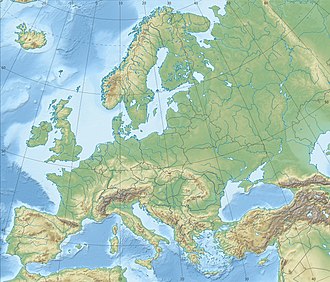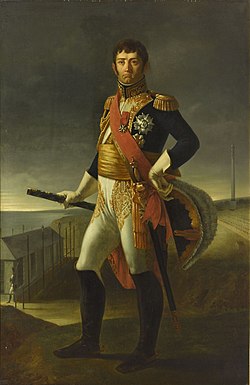| Battle of the Bidassoa (1813) | |||||||
|---|---|---|---|---|---|---|---|
| Part of War of the Sixth Coalition | |||||||
 Battle of the Bidassoa, 9 October 1813. | |||||||
| |||||||
| Belligerents | |||||||
| | | ||||||
| Commanders and leaders | |||||||
| | | ||||||
| Strength | |||||||
| 62,000 [1] | 89,000 [2] | ||||||
| Casualties and losses | |||||||
| 1,676 [3] 17 cannons [4] | 825 [5] –1,600 [6] | ||||||
Location within Europe | |||||||
In the Battle of the Bidasoa (or the Battle of Larrun) on 7 October 1813 the Allied army of Arthur Wellesley, Marquess of Wellington wrested a foothold on French soil from Nicolas Soult's French army. The Allied troops overran the French lines behind the Bidassoa River on the coast and along the Pyrenees crest between the Bidasoa and La Rhune (Larrun). The nearest towns to the fighting are Irun on the lower Bidassoa and Bera on the middle Bidasoa. The battle occurred during the Peninsular War, part of the wider Napoleonic Wars.
Contents
- Background
- Operations
- Preparations
- Battle
- Allied Army
- French Army
- Bidassoa
- La Rhune
- Results
- Explanatory notes
- Notes
- References
- External links
Wellington aimed his main assault at the lower Bidasoa, while sending additional troops to attack Soult's centre. Believing his coastal sector secure, Soult held the right flank with a relatively weak force while concentrating most of his strength on his left flank in the mountains. However, the British general obtained local intelligence that indicated that water levels on the lower river were much lower than the French suspected. After careful planning, Wellington launched a surprise assault which easily overran the French left flank defences. In the centre, his army also won through the French defenses, though his Spanish allies were repulsed in one attack. At the beginning of the fighting, Soult realised that his left flank was in no danger, but it was too late to reinforce his positions on the right. Some French generals were shocked at how poorly their soldiers fought.




